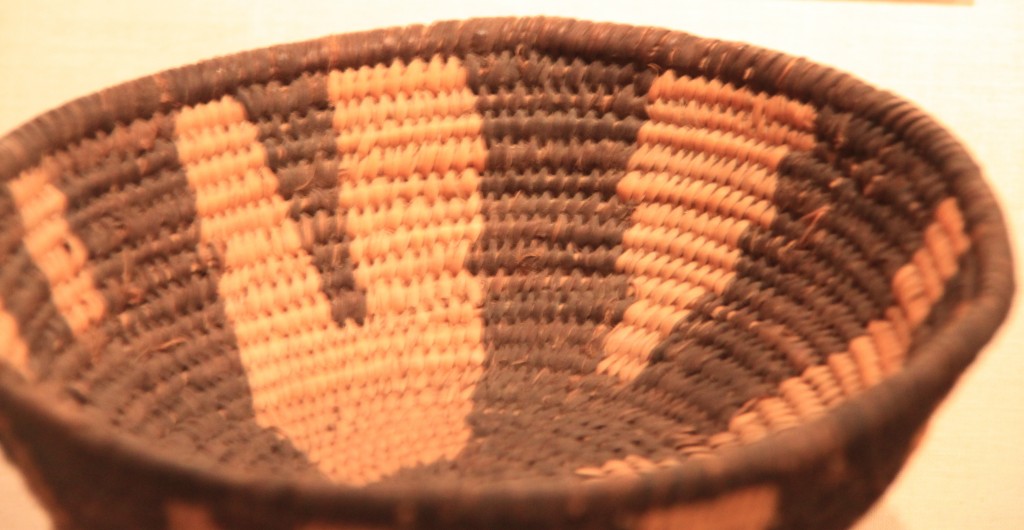This traditional trading basket dates back to the time of the Lewis and Clark expedition in the early nineteenth century. It is a round coiled basket with a self-coiled rim finish and was presumably traded between the Native Americans of the Pacific Northwest and the pioneers.(1) Most of these baskets were made from willow and bear grass which are still abundant in this part of the country and the patterns differ by region and individual taste. Native American women would weave these containers to be used in bartering with the passing explorers and later the Western settlers. In post-contact years, baskets like this one were a valued commodity for both the Native Americans who exchanged them for foreign materials and the new Americans who used them for decoration in their homes.(2)
1. James, George Wharton. Indian Basketry. New York: Doves Publications, Inc., 1972.
2. Turnbaugh, Sarah P., and William A. Turnbaugh. Indian Baskets. Atglen, PA: Schifter Publishing, 2004.
Pictures provided by Idaho State Historical Society:
-Basket in Lewis and Clark exhibit (1926.6.149)

